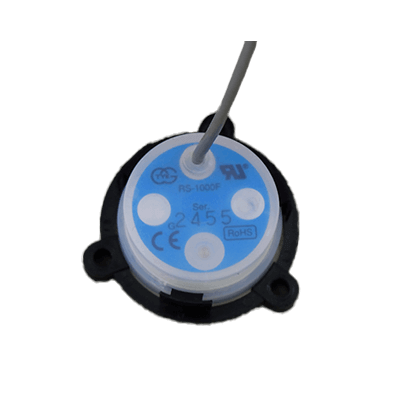What Is a Liquid Sensor?
 Liquid sensor is a sensor that detects leakage of liquids such as chemicals and water. It is used as a safety measure to prevent chemical damage caused by a large outflow of chemicals in the early stages of leakage when a leak occurs in a storage tank for chemicals used in production facilities.
Liquid sensor is a sensor that detects leakage of liquids such as chemicals and water. It is used as a safety measure to prevent chemical damage caused by a large outflow of chemicals in the early stages of leakage when a leak occurs in a storage tank for chemicals used in production facilities.
In recent years, improvements in detection technology have made it possible to handle a wide variety of liquids containing chemicals, including the establishment of detection methods using fiber sensors, in addition to the conventional detection method using the conductivity of the liquid.
Uses of Liquid Sensors
Liquid sensors are used to prevent damage to equipment, devices, and human casualties caused by leaks in production facilities and machinery. Anything that uses liquids such as chemicals and pure water, such as pipes and pipe fittings, liquid storage tanks, liquid pumps, condensation in cooling pipes, and draft chambers. The liquid sensor is used to detect leaks at an early stage.
Liquid sensors are also used to detect oil leaks in hydraulic cylinders and other hydraulic drive equipment used by production facilities and equipment in explosion-proof areas, and to detect leaks and leakage under facility floors.
Principle of Liquid Sensors
Liquid sensors can be broadly classified into contact-type detection methods that use the conductivity of the liquid for detection and contact/non-contact methods that use reflection and transmission, such as fiber sensors.
The contact type liquid sensor, which detects using the conductivity of the liquid, consists of a sensor section where an electric current flows, due to conductivity, through the liquid. Detection occurs when the liquid comes into contact between two electrodes, and a detector that detects the resistance between the electrodes.
In general, liquid sensors using this detection method can detect leaks over long distances, over a wide area by reciprocating, or even by wrapping the sensor around the liquid sensor.
The contact/non-contact type liquid sensor detects using reflection and transmission. It uses a fiber sensor that incorporates an infrared light emitting/receiving mechanism in the sensor section and detects leaks by using the reflection of liquid.
In general, liquid sensors using this detection method have the sensor part covered with Teflon resin, and can be used with chemicals and explosion-proof specifications.
Types of Liquid Sensors
The most common type of liquid sensor is a liquid sensor that detects leaks and leaks by changing the resistance of the water/liquid sensor section, which consists of two sensing strips. There are several types depending on the shape, material, and function of the sensing strips in the detection section.
The two main types of detection strips are the basic strip-shaped detection strip and the point-type detection strip. The basic type can detect water and liquid leakage anywhere where the sensor section is installed. The point type, as the name suggests, detects water and liquid leakage at a single location. It is used when the location of the leakage is narrowed down and the leakage is detected only at that point.
There are several types of leak detectors that differ in terms of material and function, and they are classified according to the location where the detection zone is installed. Compared to the general type, some are made of different materials with superior resistance to high temperatures and chemicals. Some can be used in environments with high dust and humidity, and some can be installed in pipes as opposed to those laid on the floor. There are also a variety of other types, including highly sensitive types and leak detection strips that are generally shaped like a strip and have a position detection function that shows where in the detection strip the leak has been detected.
How Liquid Sensors Work
Since the detection is based on a change in resistance, once water or liquid leakage is detected, the sensor can be returned to the normal resistance range by wiping off water or liquid, so it can be used as a sensor again immediately.
Leakage sensors are connected and used in conjunction with leakage detectors from various manufacturers. The length of the detection band that can be laid varies. This depends on the combination of the detection band and the detector, so selection must be made according to the area to be detected.
Some detectors have restrictions on the length of each detection strip and others have restrictions on parallel connection, so the length of the detection strip that can be connected and the total length that can be detected may differ.
Examples of commonly used applications include factories of industrial equipment that use water or liquids, such as data centers and semiconductor manufacturing plants, as well as air conditioners, cooling pipes, and under-floor piping.